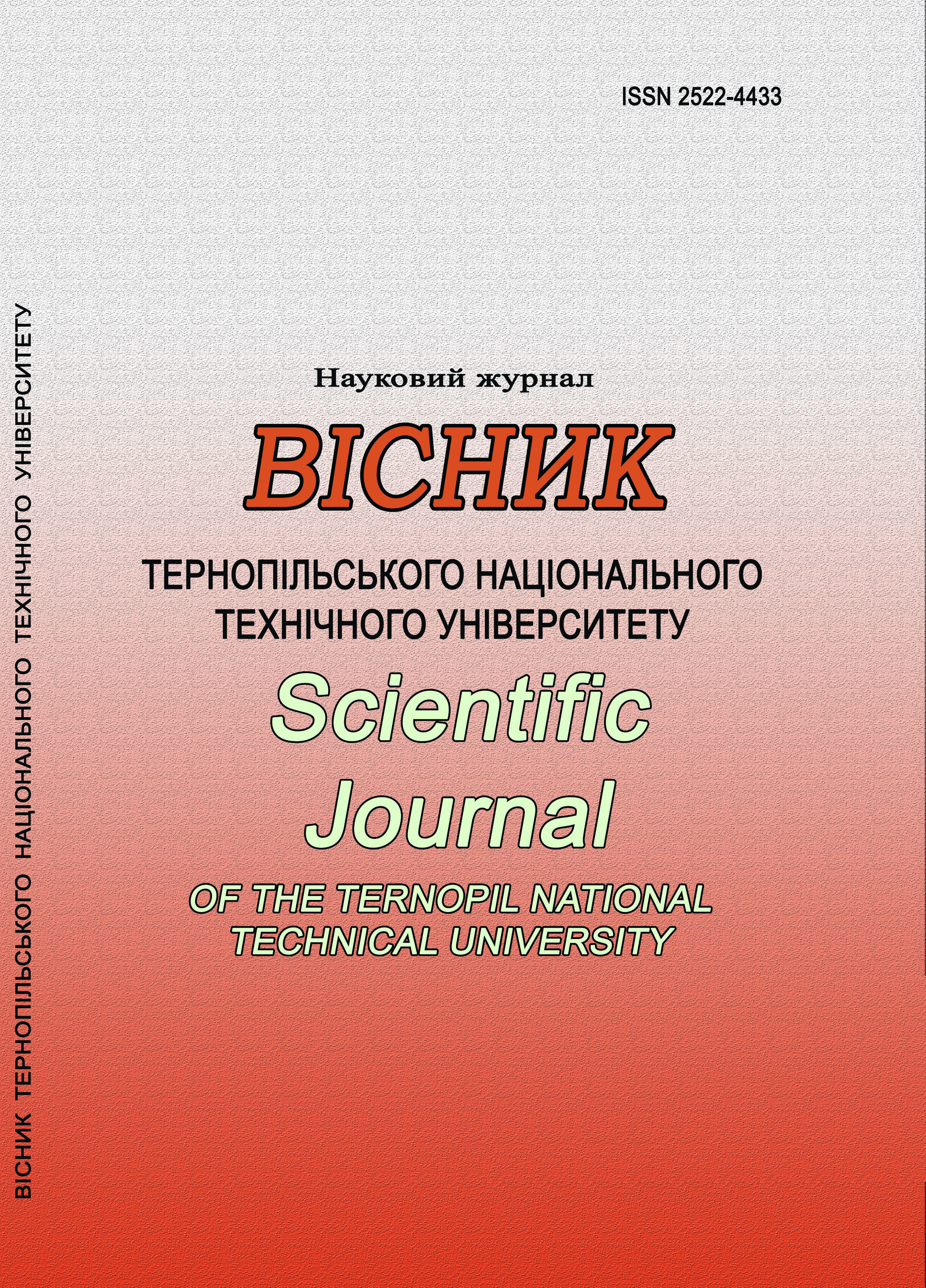Substantiation of flexible screw conveyor metal consumption under productivity maintenance conditions
Main Article Content
Abstract
Transportation, as well as loading and unloading, of bulk materials by flexible screw conveyors has wide practical application and its share is approximately 40–45%. The flexible screw conveyors are also widely used as they can change the trajectory and height of technological raw material transportation. The above-mentioned mechanisms consist of separate rigid sections which are pivotally connected between each other. Though, high metal consumption is one of their disadvantages. Taking into account that the load on section is increasing from the unloading area to the working body, it has enabled us to reduce their metal consumption. Some theoretical substantiation of productivity determination and energy values of flexible screw conveyors depending on the type of technological raw material and the height of transportation has been given in the article under discussion. The obtained characteristics have made possible to substantiate the force factors acting on separate sections. The rigid sections where the rotary moment transmission is taking place due to the flat plates action have been used in the flexible screw conveyor. Therefore, some recommendations on the mechanism metal consumption reduction without its productivity decrease due to the plates size optimization have been made in the article under discussion.
Article Details
Issue
Section

This work is licensed under a Creative Commons Attribution 4.0 International License.
References
1. Gevko B. M., Rogatynsky R. M. Screw feeders for agricultural machines. Lviv, 1989. 176 p.
2. Trokhaniak O. M, Hevko R. B., Lyashuk O. L., Pohrishchuk B. V., Dovbush T. A. Dobizha N. V. (2020), Research of the of bulk material movement process in the inactive zone between screw sections, INMATEH-agricultural engineering. Vol. 60. No. 1. P. 261–268, Bucharest, Romania. DOI: https://doi.org/10.35633/inmateh-60-29
3. Lyashuk O. L., Vovk Y. Y., Sokil M. B., Klendii V. M, Ivasechko R. R, Dovbush T. A, (2019), Mathematical model of a dynamic process of transporting a bulk material by means of a tube scraping conveyor, Agricultural Engineering International: CIGR Journal. Vol. 21. No. 1. P. 74–81; Fengmin Zhao/China.
4. Dovbush T., Khomyk N., Dovbush A., Dunets B. (2019) Evaluation technique of frame residual operational life. Scientific Journal of TNTU (Tern.). Vol. 93. No 1. P. 61–69. DOI: https://doi.org/10.33108/visnyk_tntu2019.01.061
5. Dovbush T. A., Khomyk N. I., Tson H. B. Reducing the metal capacity of nagging transport mechanisms. Materials of the International Science and Technology Conference “Fundamental and Applied Problems of Contemporary Technologies” until the 60th day of falling asleep at the Ternopil National Technical University of Ivan Pulyuya, the 175th day of the 14th birthday. T.: ТNTU, 2020. P. 20–21. (New materials, technology and advanced design elements).
6. Gevko R. B., Khomyk N. I., Zharovsky O. S., Dovbush T. A., Details of machines and basics of automated design: a textbook for laboratory work. Ternopil: FOP Palyanytsya V. A., 2021. 256 p.
7. Dovbush A. D., Khomyk N. I., Dovbush T. A., Rubinets N. A. Applied mechanics and basics of design: educational – methodical manual for calculation and graphic work. Ternopil: FOP Palyanytsya VA, 2015. 116 p.

